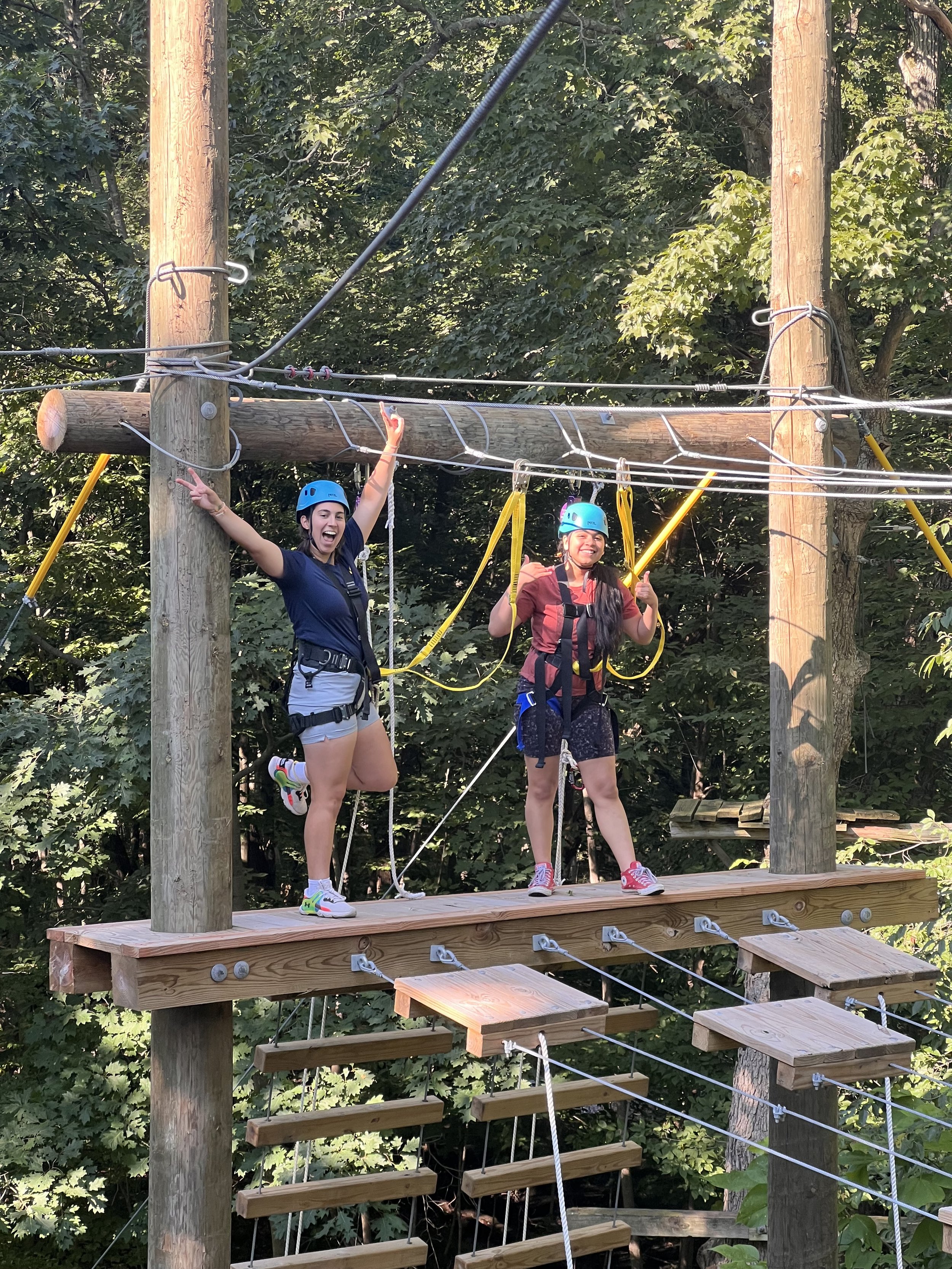What Is Adventure Therapy? A Unique Approach to Growth and Healing
Untangling More Than Just Rope
This past fall, I stood in front of a group of coworkers who, despite working in the same department, rarely interacted. In front of them lay a pile of rope—tangled and knotted. Each person was asked to grab a piece of the rope and, without letting go, work together to untangle it.
What began as a physical challenge soon became something deeper. Within just 15 minutes, this simple team-building exercise began to unravel not just the rope, but invisible knots in the group’s communication, collaboration, and connection. This is the heart of Adventure Therapy—using experience as a powerful tool for transformation.
What Is Adventure Therapy?
Adventure Therapy is an experiential, action-based approach to mental health and personal development. It involves engaging in activities that promote reflection, growth, and lasting change, all within a structured therapeutic environment.
Unlike traditional therapy that relies heavily on talking, adventure therapy uses experiences as the catalyst for insight and healing. It has deep and diverse origins, but draws most profoundly from principles of experiential education, championed by educational reformer John Dewey, who said:
“Give the pupils something to do, not something to learn; and if the doing is of such a nature as to demand thinking, learning naturally results.”
Dewey and his colleagues championed the idea of educating the whole person. By participating in meaningful, hands-on activities, individuals learn about themselves, their relationships, and how they respond to real-world challenges—all while being supported by a trained therapist.
In essence, it is through action, engagement, and reflection on impactful experiences that true learning takes place
How Does Adventure Therapy Work?
In adventure therapy, a therapist guides a client or group through a carefully chosen activity. These activities may involve problem-solving tasks, outdoor challenges, or creative exercises that mirror the client’s real-life struggles and strengths.
Here’s how it works:
Multisensory Engagement: Hands-on activities activate different parts of the brain, supporting learning and neuroplasticity.
Insight Through Action: How someone engages in an activity often mirrors how they show up in daily life, revealing patterns, strengths, and areas for growth.
Guided Reflection: Therapists lead structured conversations to help clients process what happened, what it means, and how to apply it in their lives.
For example, untangling a rope as a group can symbolize resolving communication issues, navigating change, or rebuilding trust.
Experience is life’s greatest teacher, and adventure therapy harnesses this principle to create powerful therapeutic shifts.
Adventure therapy may be combined with other approaches like mindfulness, cognitive-behavioral therapy (CBT), or trauma-informed care, depending on the client’s goals.
Core Elements of Adventure Therapy
One foundational aspect of this approach is the 7 Adventure Beliefs (Alvarez & Stauffer, 2001), which help create a safe and supportive space:
Enjoyment
Safety
Belonging
Freedom
Trust
Challenge
Effective Communication
These beliefs are woven into every session to foster emotional safety, self-discovery, and personal growth.
The Experiential Learning Cycle
Adventure therapy is rooted in Kolb’s Experiential Learning Cycle, which guides how people learn through doing:
Concrete Experience – Actively participating in an activity.
Reflective Observation – Asking “What happened?”
Abstract Conceptualization – Exploring “So what does it mean?”
Active Experimentation – Applying new insights: “Now what?”
This process helps turn a one-time activity into meaningful life change through guided self-reflection and applied learning.
Who Can Benefit from Adventure Therapy?
If you learn best by doing—or find traditional talk therapy doesn’t fully meet your needs—adventure therapy might be the right fit for you.
It’s especially effective for people who:
Struggle to express themselves verbally
Feel “stuck” in traditional therapy settings
Want to develop confidence, resilience, or better communication
Are seeking a more engaging, hands-on healing experience
Adventure therapy helps you step outside your everyday environment and look at your challenges from a new perspective.
Common Misconceptions About Adventure Therapy
Myth: It’s just outdoor therapy or extreme sports.
Fact: While some sessions may involve nature or physical activity, adventure therapy can also take place indoors and include non-physical tasks like puzzles, role-play, or group challenges.
Myth: Everyone must participate in the same way.
Fact: Adventure therapy follows a “challenge by choice” philosophy. Activities are always tailored to the individual’s comfort level and therapeutic goals. For some, just showing up to a session is a meaningful step.
Myth: It’s only for groups.
Fact: Adventure therapy can be done one-on-one, in families, or in groups. The experience is designed to reflect real-life issues and is guided to meet each person’s unique needs.
Adventure therapy offers a fresh, dynamic path to self-discovery and personal growth. By turning everyday experiences into therapeutic breakthroughs, it helps people reconnect with themselves and others in powerful ways.
Whether you’re working through anxiety, trauma, relationship struggles, or team dynamics—adventure therapy invites you to learn, grow, and heal through doing.
Interested in Adventure Therapy?
If you’re curious about whether this approach is right for you or your organization, consider reaching out to learn more. Mikaela Schulz is professionally trained in adventure therapy and can tailor sessions to fit your unique needs and goals. The path to healing might just begin with a single, shared experience.





